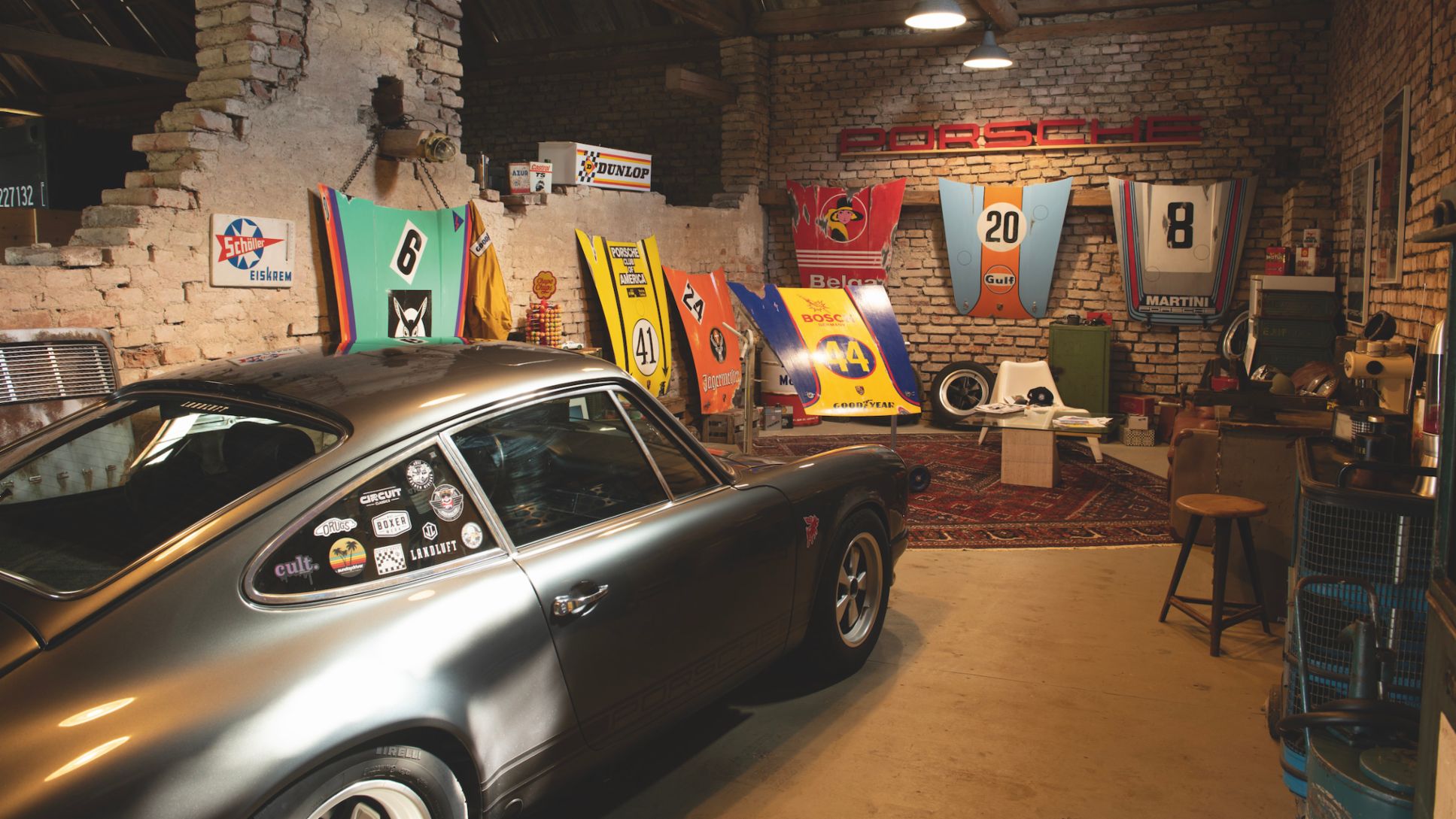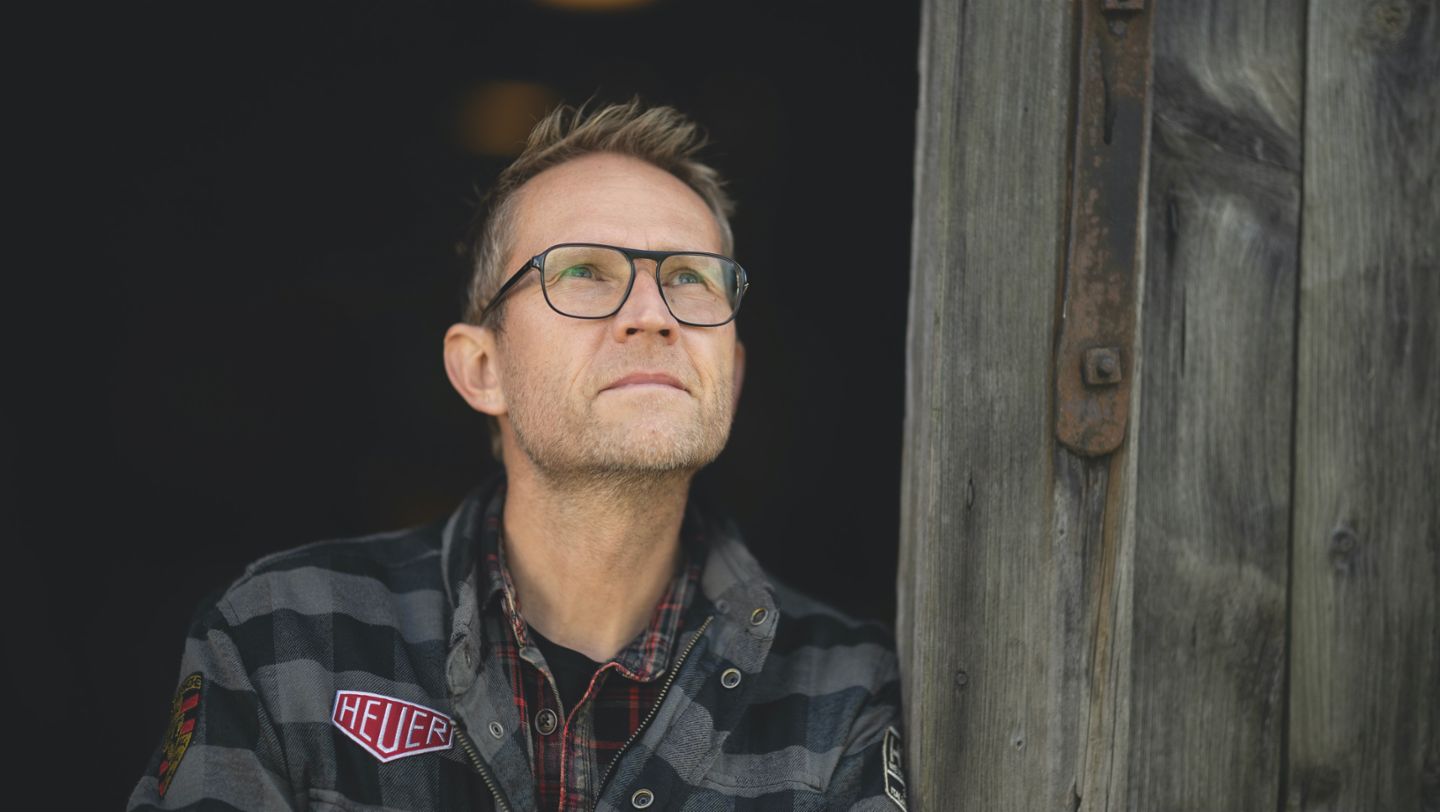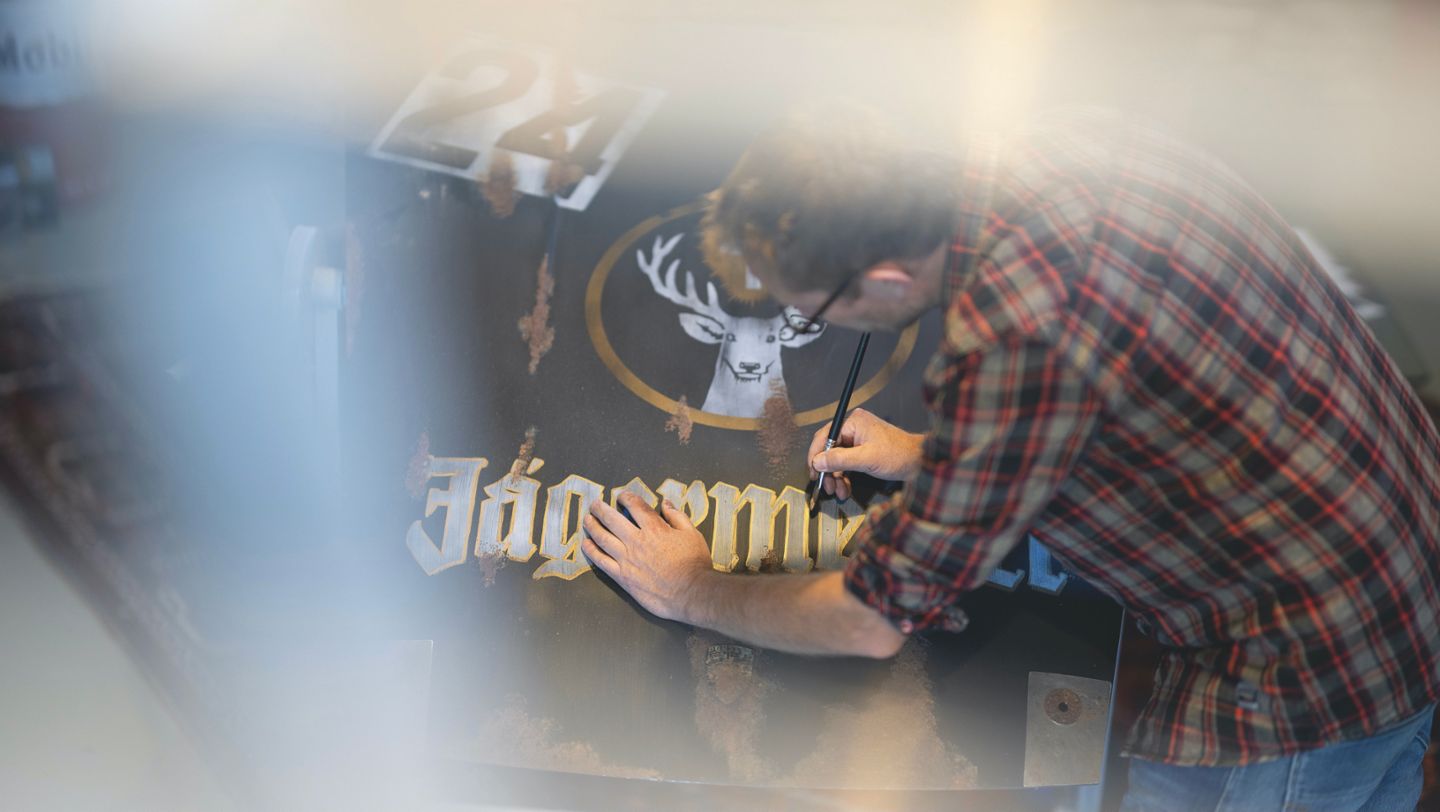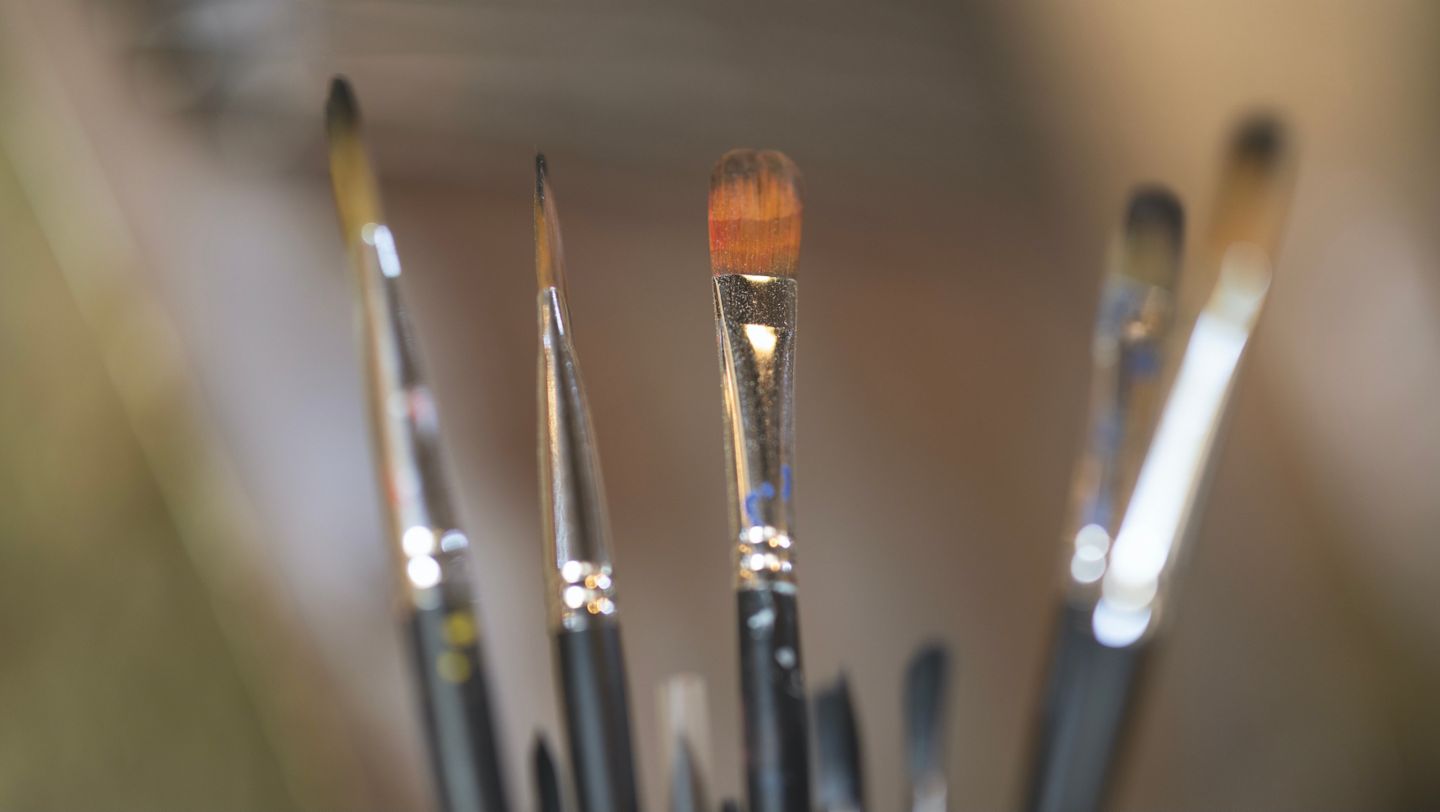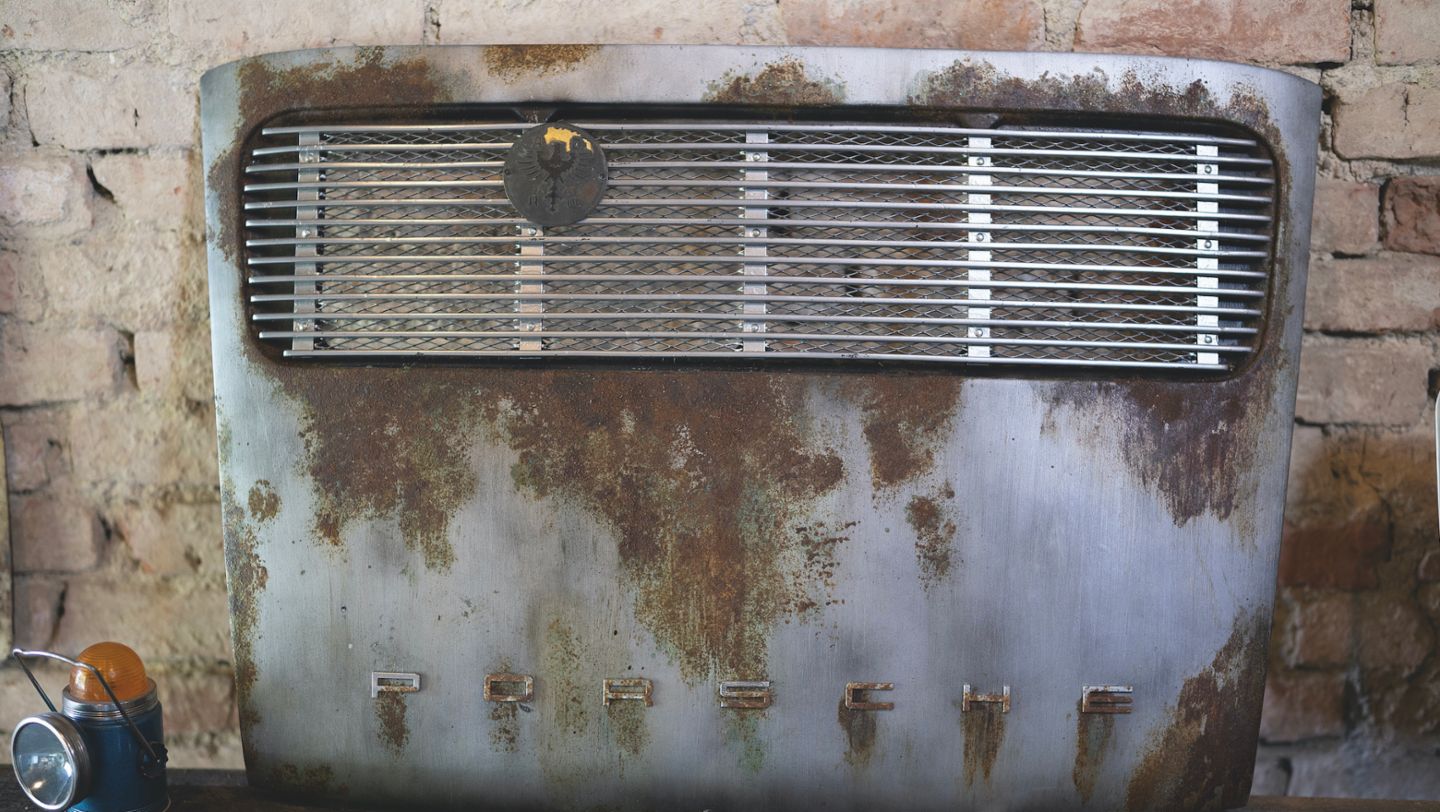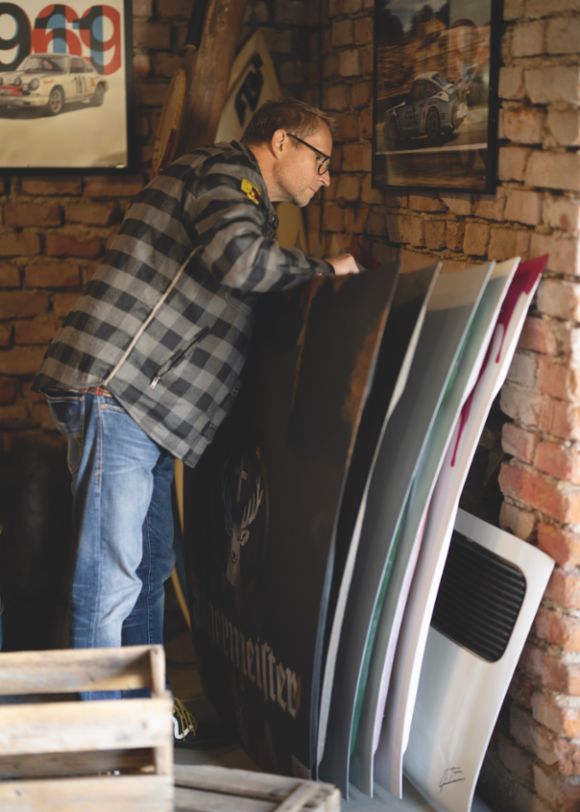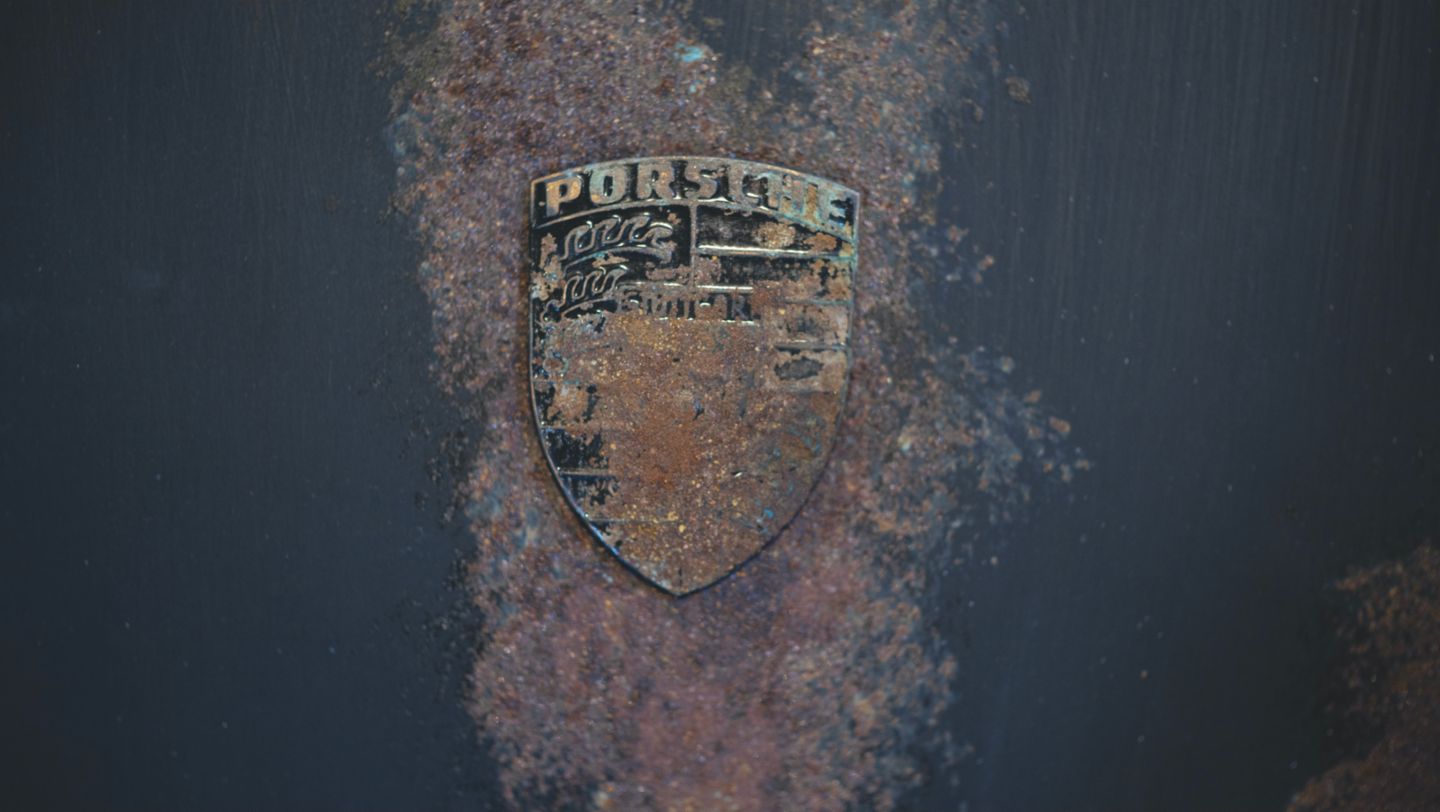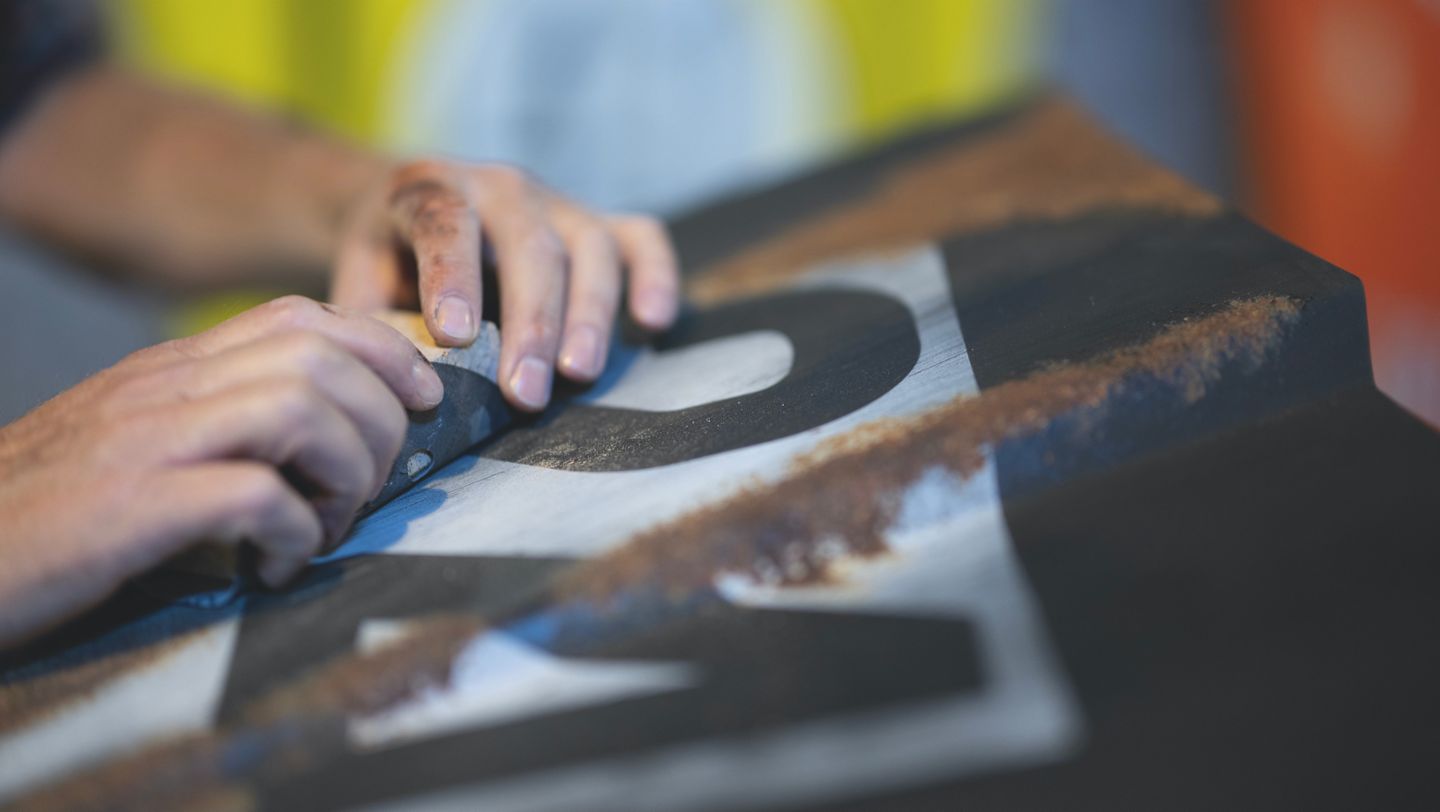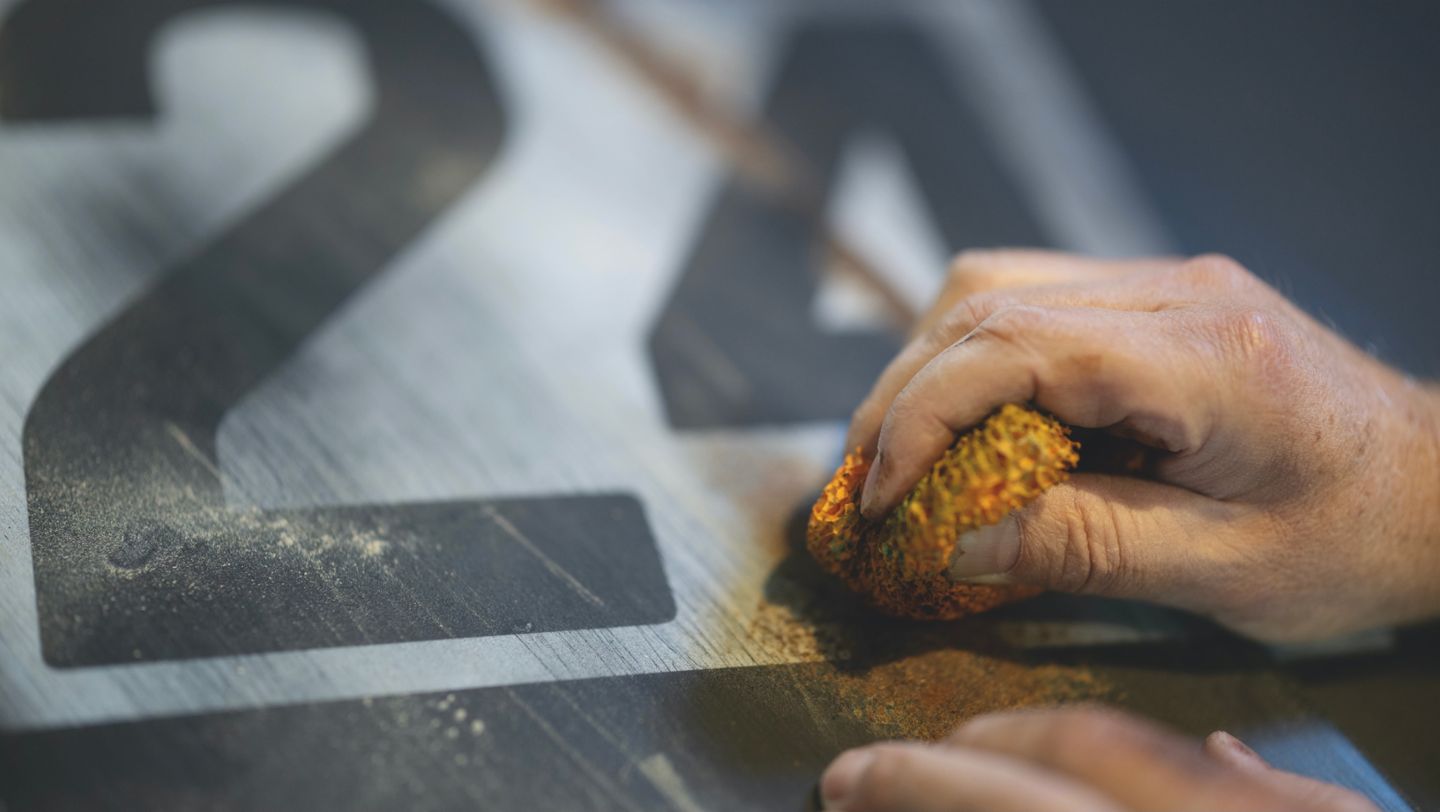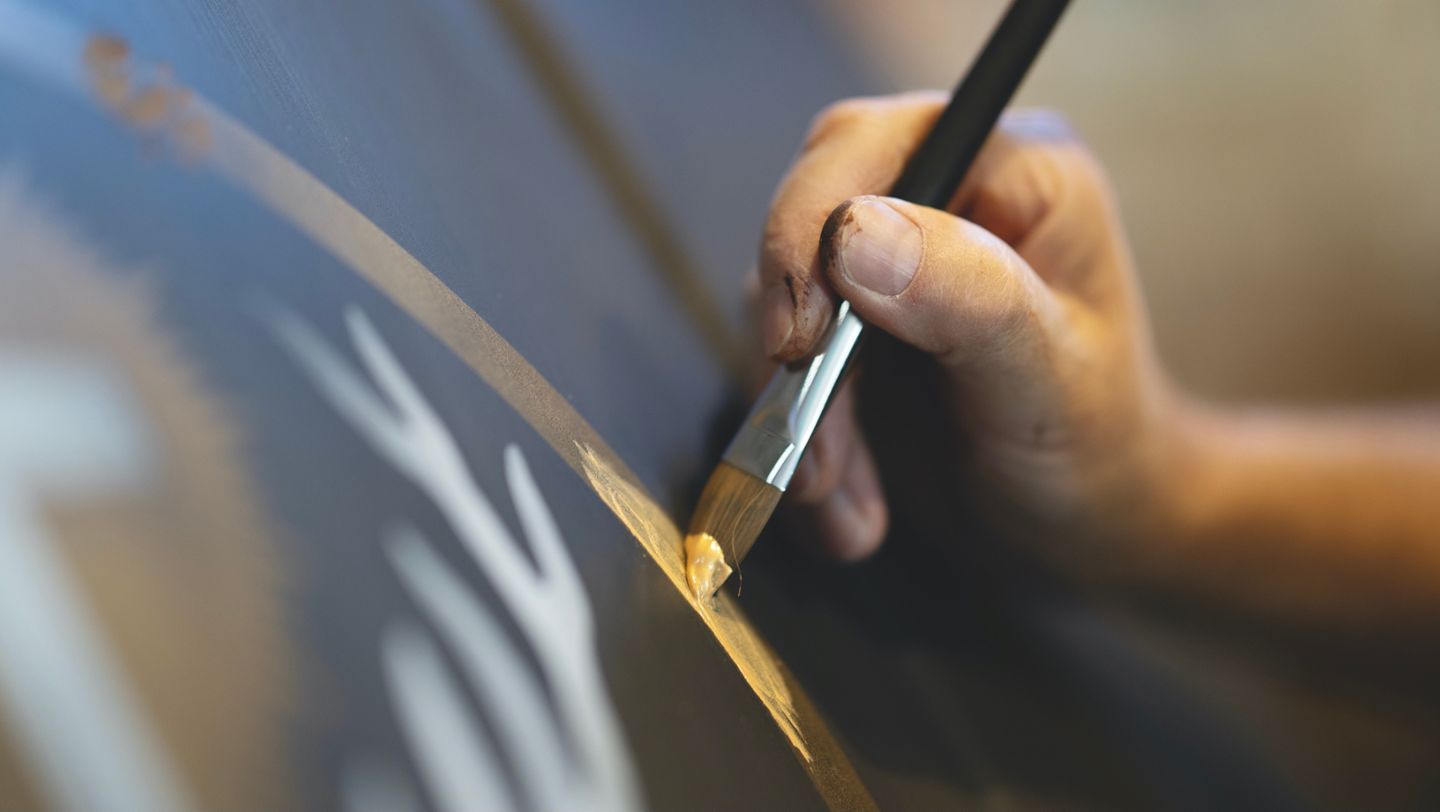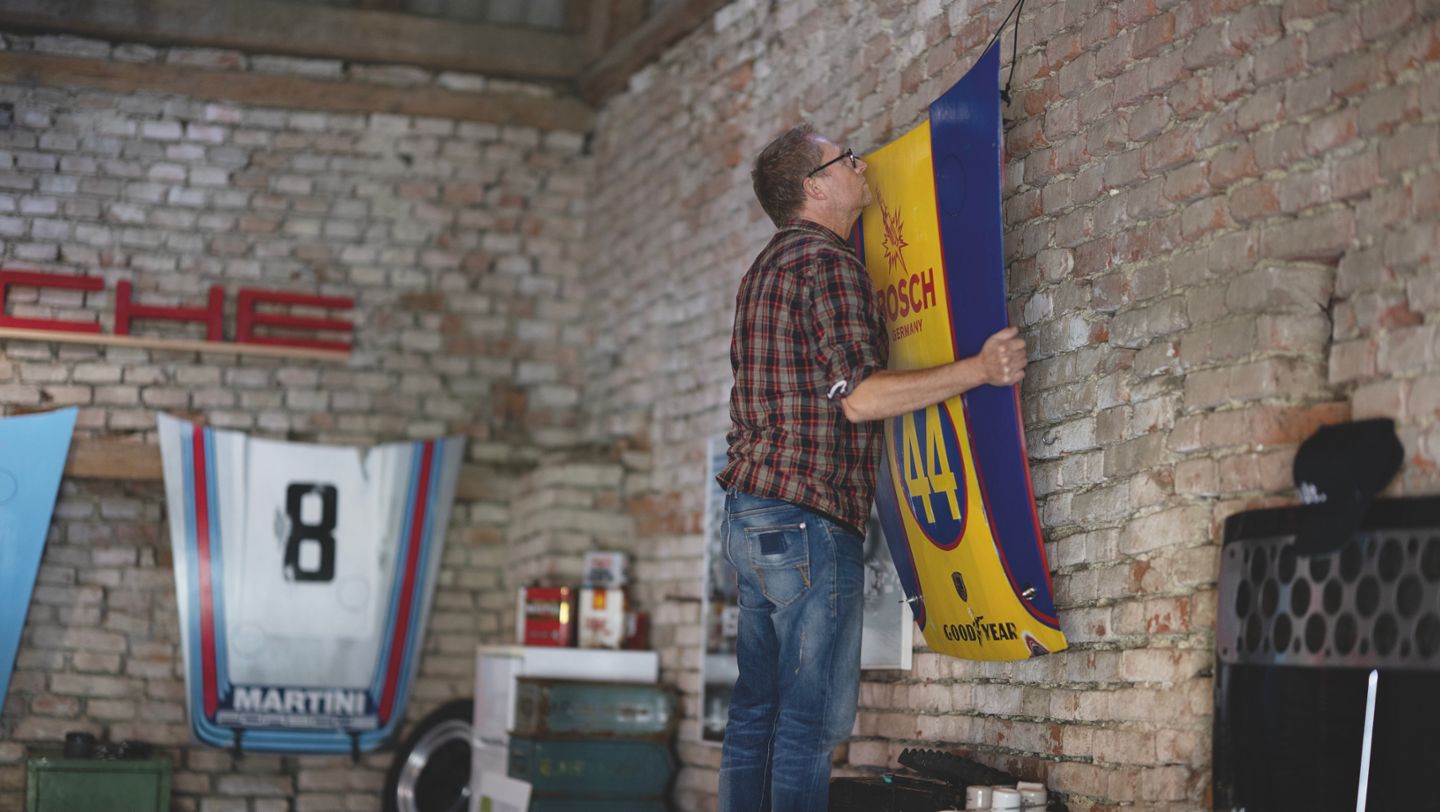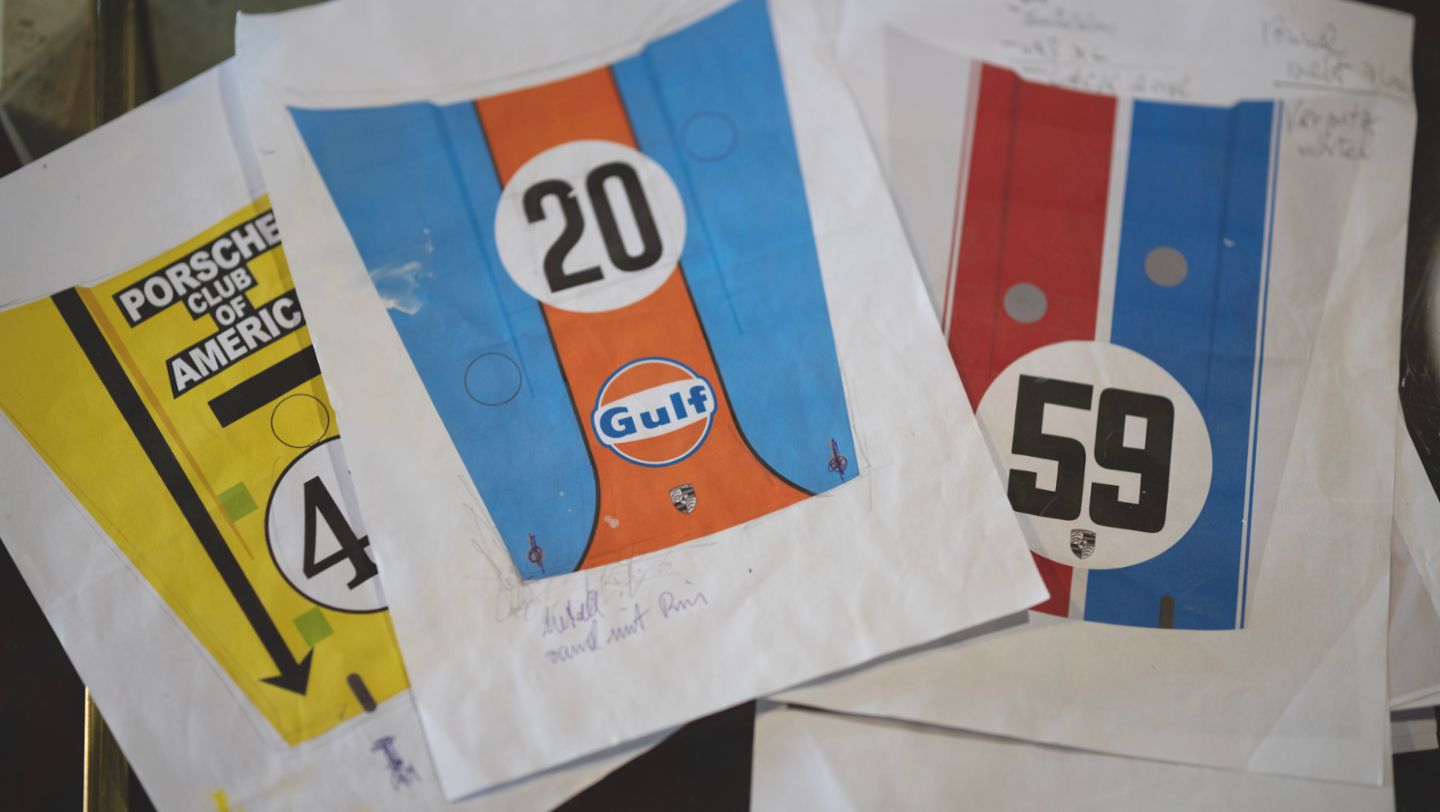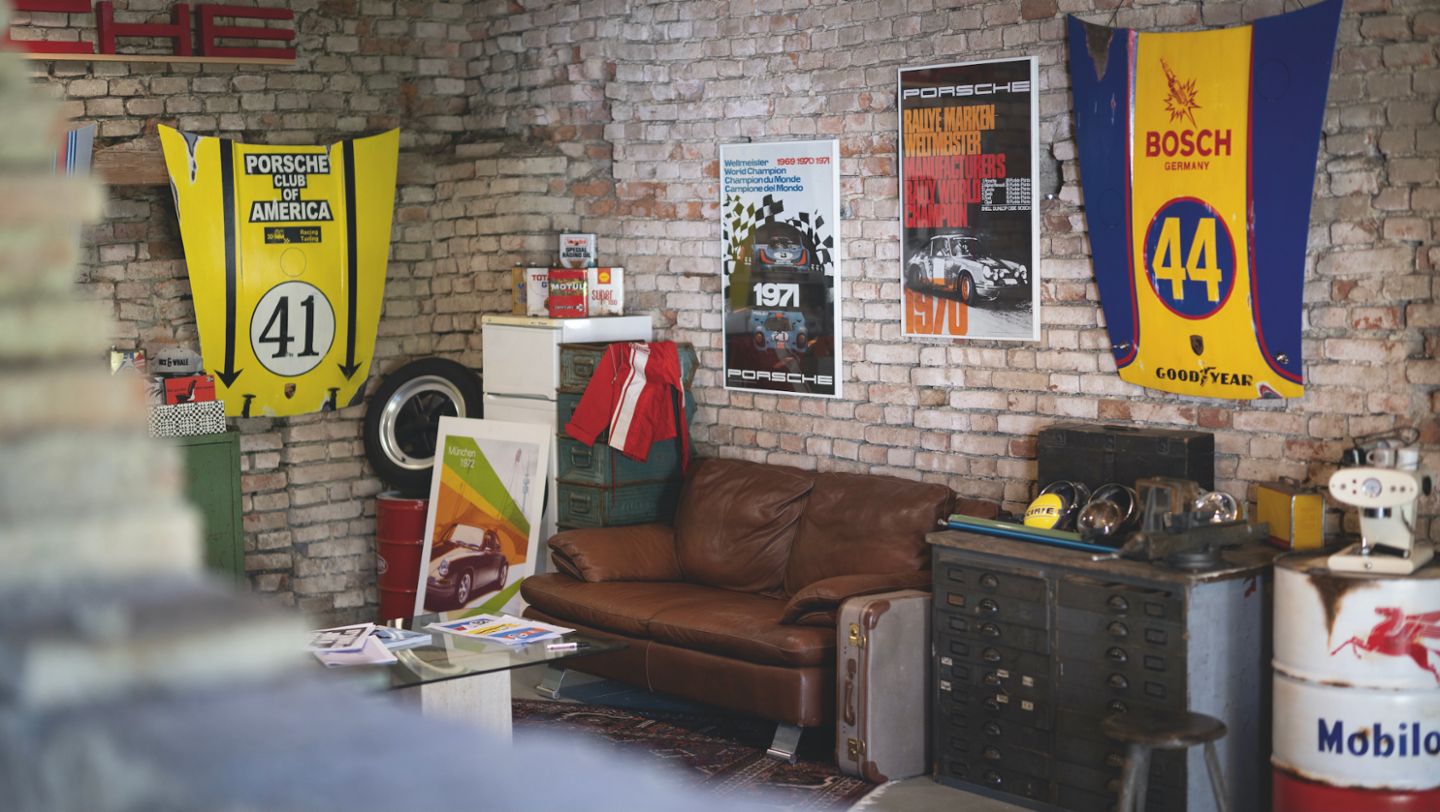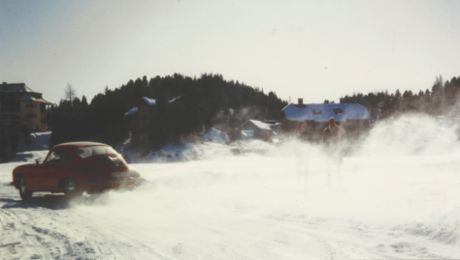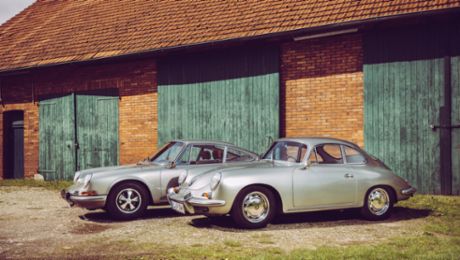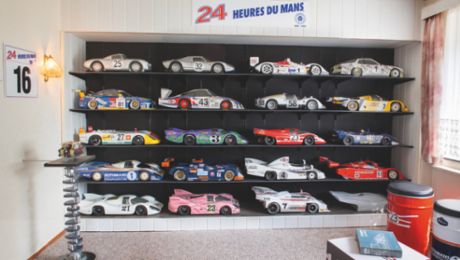He really was always destined to dedicate himself to the aesthetics of objects: his relatives are church painters, artists and other creatives. Marc Clormann grew up with a love of designing and the creation of artistic interpretation. He’s now 52 years old, but even while still at school he earned his pocket money with paint. “Airbrushing was big at the time, with a huge scene revolving around it. I designed bonnets, motorbike petrol tanks and cover caps for off-road vehicles using an airbrush,” Clormann recalls.
Not long afterwards he decorated a motorhome with holiday motifs. On the left a kite in the sky, on the right a camel in the desert, and a surfer in the background. “I’ve always enjoyed playing around with paint.” We’re talking about the 1980s, a time when it wasn’t yet possible to fit multi-coloured wraps on cars. He later studied communication and industrial design, worked as a freelance designer, and ultimately opened his own design agency.
Porsche meet-ups, driving excursions or dawn photoshoots
He works with unusual packaging and corporate designs, and develops solutions that entice buyers and make an important contribution to the branding process. Simply put, his work confers charisma. He lives with his two children in a farmhouse that has stood for over a century in Penzing, in the Upper Bavarian district of Landsberg am Lech, Germany. “I love the countryside, classic motorsport and air-cooled Porsches,” he says. Appropriately, his social media community knows him as @911.landluft, and his followers accompany him to Porsche meet-ups, driving excursions or dawn photoshoots.
A few years ago, Clormann began buying old Porsche bonnets and started on an artistic journey through time. A journey to the motorsport of decades past. He adds that he also collects old racing suits and jackets with genuine emblems. This is all the history he needs.
“I don’t have to hang an engine on the wall to be reminded of a race that I watched ages ago. But depicting the emotions of that time on a bonnet is really exciting,” he explains. He tries to build the story behind all the dents, the rust and the other would-be defects to be found on used bonnets. “The metal is the canvas on which I recreate historic motor racing designs. First, I compose an artistic interpretation,” he says.
"I’m a big fan of patina" Marc Clormann
The procedure is as follows: cleaning, grinding, priming – creating an ideal base. Then he sketches the planned design on the bonnet, masks the contours precisely, then starts painting with acrylic, brushes and – above all – technical skill and precision. Acrylic adheres particularly well to metal that has been prepared accordingly. It also dries quickly and allows different colours to be mixed perfectly to achieve the desired nuance. “It often takes more than 30 hours to finish a bonnet. I’m a big fan of patina. I’m more fascinated by old cars with defects and a visible history than by highly polished garage queens,” he reveals. At the end of the day, he’s not a collector, but an artist who loves to create and modify. “I’m a designer. I drive a Porsche because I love its overall aesthetic – but I also love to optimise.”
Depending on what the customer wants and how much rust can be seen, he grinds and adds patina to a greater or lesser degree – some customers even ask for a finish in 24-carat gold leaf. Finally, he adorns his colourful works with grilles, emblems and logos, preferably using old parts here as well.
Fascinated by the so-called golden era of motorsport, Clormann wants his bonnets to transport the aura of motor racing into the here and now. In garages, living rooms, offices – for dreaming and journeying into the past. “When I’m painting I like to remember how it felt when motor racing was becoming a really big thing. When the spectators were only half a metre from the track. It’s unimaginable in today’s motorsport.”Despite the dangers, of which he is conscious, he loves how much was allowed back then, how many things a driver had to decide without radio contact with a team.
Golden era of motorsport
“These emotions I feel while I’m painting – I want to pass them on to my customers,” says Clormann, explaining his wall art. Motorsport has lived through many eras in the past decades, with its golden era reaching a climax in the 1960s and 1970s. This era was defined by enormous achievements, groundbreaking technology and legendary races with intense rivalries. The drivers and engineers of this time were pioneers, constantly searching for new ways to extend the boundaries of what was possible.
Clormann likes to watch old motor racing videos, drawing inspiration from them during the creative process. And from his own 911 cars – for example, a 1984 G-Series in Light Brown Metallic and a specially built backdated model. “Porsche created a gold standard with the 911. Its outline and image are legendary. An iconic design has an incredibly powerful effect,” he says. He sifts through some used bonnets leaning against the brick wall of his garage studio. Here, in the middle of an old barn, he has also created a lounge as a meeting place for fans of air-cooled boxer engines.
Teamwork, ambition and the pursuit of perfection
His eyes linger on the Gulf Racing design, but he remains silent. The light-blue background with blue and orange stripes is a reminder of one of the most famous racing cars of all time: the Porsche 917. Clormann takes out a bonnet bearing the Jägermeister stag and starts rhapsodising about the legendary Jägermeister paintwork. The orange Porsche 911 RSR from 1974 wasn’t just an old racing car, he says, but a legend from a bygone era. As with many motorsport designs of the time, the Jägermeister paintwork also represents the courage of the driver, the innovation of the manufacturer, as well as teamwork, ambition and the pursuit of perfection. “The ‘Grello’ 911 from Manthey Racing with its colour combination of luminous yellow and green is also going to be an icon, I’m certain,” Clormann predicts.
Weather permitting, he likes to paint outdoors in the heart of nature, behind him the little stream on which the sports fan with an eye for historic boats and surfing likes to paddleboard with his children. His Porsche is parked nearby, music can be heard, and maybe his cat, Wuschel, is taking a walk in the yard. “After three decades as a designer using mostly digital resources, I tend more and more to seek out analogue activities in my free time. I no longer feel like spending 12 hours a day in front of a screen.” After the sudden passing of his wife Ulrike last spring, he draws strength from the creative process, the associated journey through time, and the calm that he finds beyond the screen. With all the quiet and noisy stories looming behind his canvas. Of victories and defeats, tough duels and great rivalries, friendships and icons.
Info
Text first published in the magazine Porsche Klassik 29.
Author: Christina Rahmes
Photos: Markus Bolsinger
Copyright: All images, videos and audio files published in this article are subject to copyright. Reproduction in whole or in part is not permitted without the written consent of Dr. Ing. h.c. F. Porsche AG. Please contact newsroom@porsche.com for further information.
